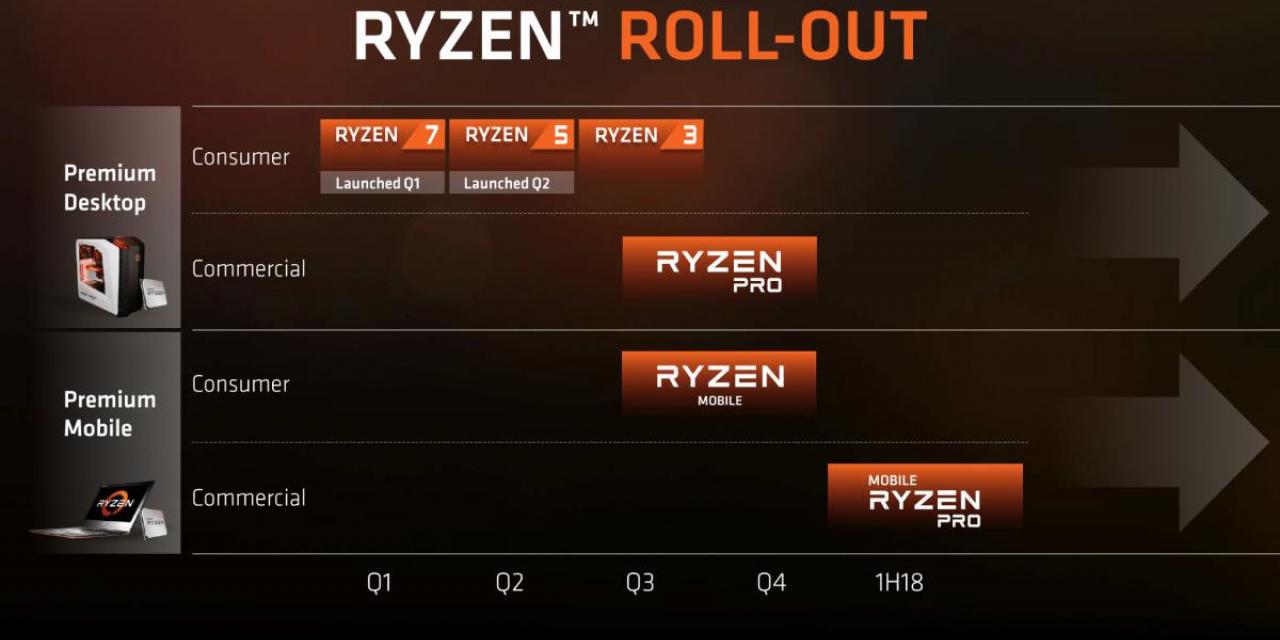
2017 was an amazing year for AMD. It went from pundits around the world talking about its eventual collapse in the early months, to bringing the heaviest hitting competition to the likes of Intel we have seen in more then a decade. Following off of the back of Ryzen and Threadripper, it launched Vega graphics cards, which although not as impactful, proved to be competitive with Nvidia cards near the top-end, which AMD hasn't been able to effectively do since 2015 with its Fury line up.
All in all, 2017 was very good to AMD, but it doesn't appear to be resting on its laurels. We're already seeing the first hints of what we can expect in 2018 and it's just as exciting.
So, what can we expect from AMD this year that has us intrigued for the future?
Ryzen APUs
With AMD's Ryzen and Threadripper chips well established for now, AMD's first focus in 2018 is in introducing more Ryzen APU chips. Also known as Ryzen on mobile with Vega, the chips will blend together both a Ryzen CPU and a Vega graphics chip. It will be a single-die solution, unlike the Kaby Lake G chips which combine Intel CPUs with AMD Vega graphics chips.
Ryzen APUs will be released for both desktop and mobile, with the latter solution being restricted to Ryzen 3 processors.
The APUs won't be able to beat out a desktop chip with a desktop graphics card, but for those looking for small-form-factor systems and for greater graphical power than you can typically expect from the likes of Intel's HD-series, Ryzen APUs should be pretty capable.
12nm Zen+
Following on from AMD's initial release of Ryzen CPUs, Threadripper top-tier chips and some of the new Zen/Vega APUs, AMD is pushing out a second-generation of Ryzen chips, or rather a Ryzen+ generation. It's not quite the fully revamped, newly architected Ryzen that is coming further down the pipe, but Ryzen+ will introduce a die shrink, which will bring with it a few neat advantages.
Applying to both Ryzen desktop CPUs and Threadripper chips, Zen+ will come with slightly higher clock speeds than its predecessor generation, offering slightly cooler operation and potentially better overclocking. It will also have lower power-consumption, which might help to make Zen+ chips a better option for laptop manufacturers.
Zen+ isn't going to blow anyone away, but it could offer as much as 10 percent improvement in performance and energy usage. Zen+ is being fabricated right now and is planned to go on sale sometime in Q2 this year.
Threadipper and Ryzen Pro Zen+ chips will show up sometime in the latter half of the year.
Vega 7nm
While AMD's CPU plans are pretty well established for the year, its graphical roadmap isn't quite so set. Initial reports suggested we could see the first iterations of AMD's next-generation Navi graphics cards in 2018, though that seems likely to be pushed into 2019 now. What we do expect to see some iterations of though, are the surprise addition of Vega graphics die shrunk down to 7nm.
This is striking because existing Vega graphics are built on 14nm and sub-10nm chips are notoriously difficult to produce. Vega is said to be skipping 12nm entirely though and going straight to 7nm. Even with few architectural changes, that kind of die shrink could make for big increases in performance, energy demands and thermals, equating to much more competitive graphics chips.
It's not clear if we'll see any consumer graphics cards built on the Vega 7nm standard in 2018, but we will definitely see some machine-learning GPUs built on the technology, giving us some idea what we can expect when the cards for the rest of us show up.
Conclusion
It's fair to say that 2018 isn't going to be the groundbreaking year that 2017 was, but Ryzen was years in the making. Everything now will build off of that architecture and considering Intel hasn't effectively fired back with a more powerful solution yet, AMD has some breathing room.
Graphics are a little different, as Nvidia's Volta will likely dominate existing Vega cards, but if AMD can hint at future Vega and Navi potential, it might be enough to keep fans waiting for its upcoming products.








